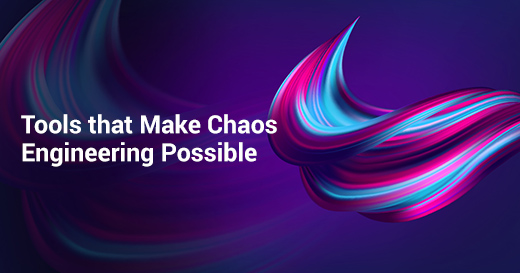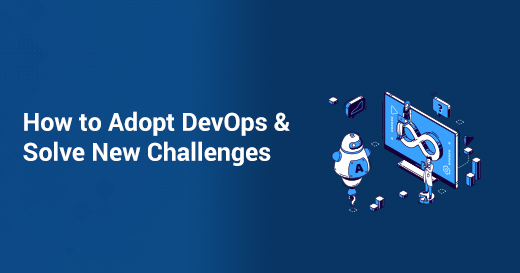Understanding the Difference: DevOps vs. CICD vs. Agile
Written by Priya George
Content WriterIn the present stage of software development, "DevOps," "CI/CD," and "Agile" are terms developers constantly come across. Often, these terms are used interchangeably. However, it is crucial to understand the difference between these terms and how they contribute to improved software operations and processes. By understanding these differences, developers can accurately employ these practices effectively.
What is DevOps?
DevOps, the amalgamation of "development" and "operations," was coined by Patrick Debois in 2009. It refers to the set of practices, tools, and philosophies that aid in delivering applications, products, and services more efficiently and quickly. DevOps began to gain popularity in the late 2000s, as software development teams and IT teams raised issues with the traditional processes where the development and operations teams worked separately. Through the integration of the software development and IT teams, this methodology encourages automation, cross-functional team communication, and collaboration. The teams are no longer isolated and focused on distinct functions. With automation, previously tedious and manual tasks are reduced, thus allowing the team to work across the entire application/product lifecycle- from development to deployment. As a result, the whole infrastructure and development lifecycle is seen as the entire team's responsibility. Two essential practices are the outcome of the DevOps mindset:
- Incremental updates: Small and frequent updates to the application, pivoting as per customer needs.
- Microservices Architecture: This eliminates overhead coordination, and teams can be more agile and efficient when updating individual services.
Need help getting started on your DevOps journey? Never fear; with our whitepaper, we provide a collection of resources to enable rapid innovation with DevOps.
What is CI/CD?
CI/CD (Continuous Integration and Continuous Deployment) is the set of practices and principles that help teams deliver accurate, reliable changes to the code. The CI/CD Model ensures automation tools and constant monitoring throughout the entire software development lifecycle. It is important to note that CI/CD is one of the practices that can be adopted by teams who work as per the DevOps mindset. By placing all the software code into a single repository, they can run automated tests continuously, thus speeding the process of releasing new updates. To learn more about the future of CI/CD practice, download our guide.
- What is CI: Continuous Integration is the practice of enabling the integration of new code into the main branch of shared product/app code as frequently as possible. It requires a version control system that allows constant change to the master trunk while keeping track of the changes being made to the code base. By automating the process of building and testing changes to the codebase, developers can fix bugs, improve software, and reduce the time it takes to deliver the update.
- What is CD: Continuous Delivery is involved testing the new changes made and, based on feedback, either deploying or reintroducing changes. It consists of a staging area where changes made are reviewed manually. Continuous Delivery allows for User Acceptance Testing (UAT) before it is deployed. Thus, the product finally released has undergone the necessary tests. It differs from the practice of Continuous Deployment, wherein the testing is automated and inbuilt within the production and testing stage. This practice allows for multiple incremental deployments without needing a significant release time.
What is Agile Methodology?
This methodology focuses on the project management aspects of a software development team. The central premise of this methodology is the understanding of modern software development, wherein there can be no monolithic software development lifecycle. Therefore, rather than bringing changes together for one 'major' deployment/release, the team focuses on bringing in more minor and incremental changes. Consequently, it aims to empower team members to work closely with customers, produce software changes rapidly and embrace the constantly changing nature of software development. This framework encourages teams to work together in uncertain environments where developers must continuously respond to change. Several frameworks work with the Agile development approach, such as Scrum, LeSS, and Feature Driven Development (FDD), to name a few.
Download our case study to learn how our Royal Cyber development team was able to drive success for a Fortune 500 insurance company with the help of an Agile development framework.
What's the difference between DevOps, CI/CD & Agile?
From the definitions of these terms, it is essential to note that these terms are not in opposition to each other as is often suggested. Instead, these are approaches that can be complementary and incorporated by teams from development to software deployment. However, for ease of differentiating, we have provided a diagrammatic representation of the "DevOps vs. CI/CD vs. Agile" issue below:
| DevOps | Agile | CI/CD |
|---|---|---|
| A software development methodology highlights the benefits of the development and operations teams working together rather than in silos. | Agile methodology highlights the need for constant development and testing throughout the entire software development lifecycle. | Continuous Integration & Continuous Delivery refers to the practice involving monitoring and automation tools for reliably changing codebase. |
| DevOps bridges the gap between the developers/testers and the IT/operations team. | Agile as a project management approach focuses on bridging the gap between the customer and their software requirements and the testing/developer team. | CI/CD is one of the workflow practices adopted by DevOps practitioners. Other practices within DevOps philosophy include microservices, IaC, etc. |
| DevOps tools are engineered to enhance the communication and collaboration between product managers, developers, and the IT team. | Agile tools are primarily oriented toward increasing project management efficiency. | These tools are primarily centered around automating the Continuous Integration process. |
| An example would be Azure DevOps, a cloud-native SaaS platform offering solutions to build DevOps pipelines. | An example of Agile development tools that encourage iterative processes would be Atlassian Jira. In addition, with integration tools like IBM Cloud Pak, you can begin the journey towards integrating the Agile approach. | Jenkins is a popular CI CD tool with a CI automation server and the ability to deploy code with Continuous Delivery. Reach out to us if you are looking for integration with Jenkins. |
How Royal Cyber can help:
We have explained how DevOps, CI CD, and Agile development differ from each other, along with an overview of the tools employed to implement and automate these frameworks’ processes more efficiently. However, the problem of how to integrate and implement the tools and best practices remains to be solved. This is where our experts can step in to help your enterprise's developers and operation team or even step in to develop the end-to-end solution. Our experts are well versed with these terms and their implications for achieving operational excellence and business growth. Get in touch with them to understand how you can modify the methodologies, workflows, and tools to meet your business requirements.
For further information, contact us at [email protected] or visit our website at www.royalcyber.com.



